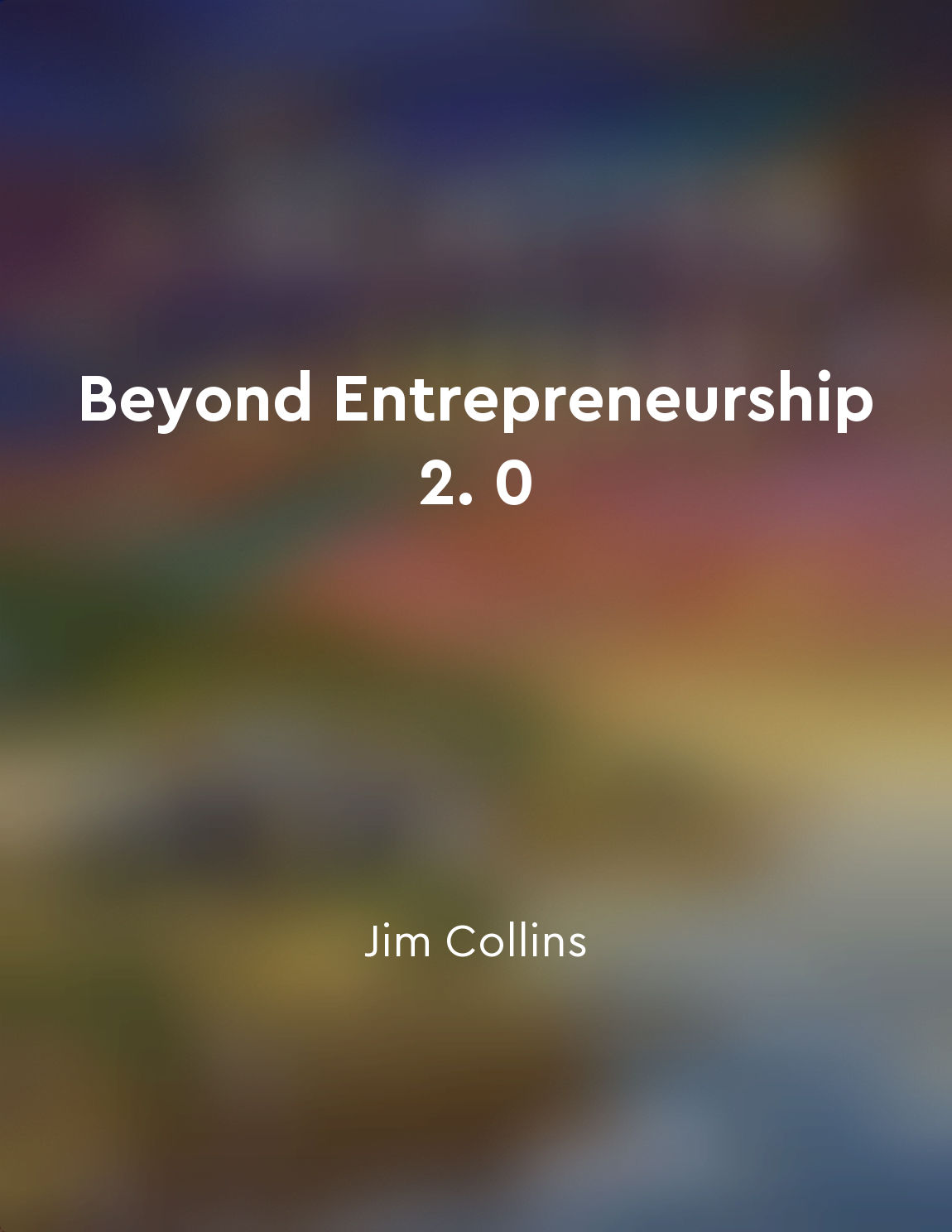Traditional business models may not be suitable for disruptive innovation from "summary" of The Innovator's Dilemma by Clayton Christensen
Traditional business models, by their very nature, are designed to optimize current operations and deliver profits to existing customers. They are built on established processes, technologies, and customer preferences that have been honed over time. However, this focus on efficiency and meeting the needs of current customers can often blind companies to the potential for disruptive innovation. Disruptive innovations typically target underserved or non-existent markets with products or services that are initially inferior to what is currently available. These innovations may not be immediately appealing to existing customers or may not fit within the existing business model. As a result, companies that are focused on maintaining their current operations and serving their existing customers may overlook or dismiss these disruptive innovations as irrelevant. The reluctance to embrace disruptive innovation is understandable, as these new technologies or business models often cannibalize existing products or services. They may require different skills, processes, and resources than what is currently in place. This can create tension within the organization and threaten the success of the existing business. Furthermore, disruptive innovations typically have lower profit margins and may not generate significant revenue in the short term. This can be off-putting to companies that are used to high margins and steady profits from their existing products or services. As a result, companies may be hesitant to invest in or pursue disruptive innovations that do not promise immediate returns. However, failing to adapt to disruptive innovation can be a fatal mistake for companies in the long run. Disruptive innovations have the potential to completely upend industries and render existing business models obsolete. Companies that are too focused on maintaining the status quo and serving existing customers risk being left behind by more agile and innovative competitors who are willing to take risks and explore new opportunities. In order to thrive in an environment of disruptive innovation, companies must be willing to challenge their existing business models and embrace change. They must be open to exploring new markets, technologies, and opportunities that may initially seem unprofitable or insignificant. Only by being proactive and adaptive can companies hope to stay competitive in a rapidly changing world.Similar Posts
Staying disciplined and focused is essential for achieving longterm success
Achieving long-term success is no easy feat. It requires a combination of factors such as hard work, dedication, and perseveran...

The quest for dominance drove fierce rivalries
The tech industry is a battlefield where companies fight tooth and nail for dominance. This relentless pursuit of power has fue...
Blockchain technology is reshaping industries
Blockchain technology is a distributed ledger system that allows for the secure and transparent transfer of digital assets with...
Lean on automation and technology tools
One of the key principles of growth hacking is the importance of leveraging automation and technology tools to streamline proce...
Create a workplace that values diversity and inclusion
To lead effectively in today's fast-paced and constantly changing business environment, it is crucial to foster a workplace cul...
Navigating through changing market trends
In today's fast-paced business environment, it is essential for organizations to stay agile and adaptable in order to keep up w...
Corporations exercise significant control over economic activities
Corporations, in the modern context, wield a considerable amount of power over economic activities. This power is not merely a ...
Globalization will continue to accelerate
The forces of globalization are like a freight train hurtling down the tracks, picking up speed and momentum with each passing ...

Build a culture of discipline to drive results
The concept of building a culture of discipline to drive results is a critical component of achieving long-term success in any ...
Strategic vision guides the direction of an organization towards success
Strategic vision is the foundation upon which successful organizations are built. It serves as a guiding light, leading the way...
